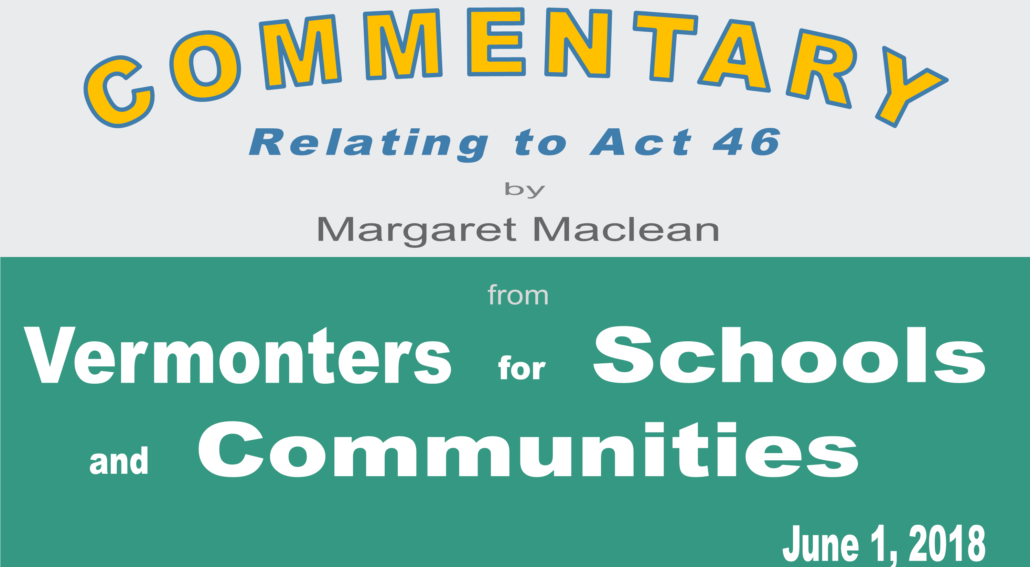
PUBLIC ED: Realtors Big Winners after Legislature Vote? | June 18, 2025
PUBLIC EDUCATION - Realtors Big Winners after Legislature Vote?
WRAP-UP
June 18, 2025
Estimated Reading Time: 3 minutes
If you're new to this important education matter, you're too darn late. But, you can still check out the previous articles.
The Senate voted yesterday 17 to 12 to accept a somewhat adjusted version of Gov. Phil Scott's public education power grab. [1] Or would it better be called a dumbing down of Vermonters? And how about the House vote?
The House of Representatives went along too, 96 to 45. [1]
One thing for certain is the politicians sure took advantage of Vermonters’ complaints about high property taxes. They falsely accused schools as being at the root of the taxation problem. [2] And look at what happened...
Vermonters or at least most of their elected officials went along with the program.
Was their opposition? Yes, there was. But the vote tells the story, doesn’t it. So, what happens now. Well _ _ it’s going to start hitting the fan. There’s a little delay built-in to give you time to forget about all of this. To get you preoccupied with something else.
But soon enough, schools will close. Bus rides will get longer for students. Numerous other things you won’t like – will happen. But whatever your complaints; don’t expect anything to be done about them. Because you won’t have any control or authority. Not really. Why? Because you just gave it away!
Maybe there will be some token something-or-other – to make you feel good about yourself for 5 minutes. Oh, and what about this...
If you consider Act 46 (from about 2016- ’18) as “Phase 1” of their plan. And the past 6 months as Phase 2, then when would you expect the (final?) Phase 3 to start? That’ll be the cherry on top won’t it?
Moving on to the next part...
An old bit of wisdom says, “You are the company you keep”. In a place that allows its future to be crushed as happened several years ago (Act 46) and again Monday – is that the company you want to keep?
And now we get to the reason for the headline.
Has the thought crossed your mind yet that Vermont may not be the place for you? And your kids? And family? And where you want to grow old? And where you want to run or start your business?
Has that crossed your mind? Maybe it will. So know this...
Following the national election last year, there was a big surge in people learning about the ins and outs of moving to other countries [3]. So it’s not much of a stretch to guess that you and others might be thinking about a move to another state (or country).
As you’re dozing off tonight; if the thought of moving does invade your mind, consider this. Think about it carefully. Study the angles and do some research. But here are a couple of high-level ideas to get you started.
- “The grass is always greener on the other side of the fence.” This little nugget of wisdom suggests you first determine if the place you want to go is better or worse (in ways that matter to you) than where you are now.
- If the new place “looks good on paper”, subscribe to a couple of their online newspapers. And going for a 1 or 2 week visit is a must if you’re getting serious.
There are numerous other things to put on a checklist. I won’t go through that here. But make sure you do. Find any “show stoppers” before you move – not after!
And if you’ve gotten to this point, you might be thinking about a move. If you are a homeowner, then you’ll need to sell your castle before hitting the road to greener pastures; right? That’s where the realtors come in. Buying and selling homes. That’s their thing. So realtors may be getting lots of calls. So, all you need now is this.
A buyer! Someone that is more or less like you. But someone who may not know the kind of environment they’re walking into. Ah, that’s not your problem is it? But in your new place; will you be a buyer there? So, be sure to know the environment YOU are walking into. Maybe being a renter is a better choice. At least for a while.
As mentioned previously, lots of things to consider. In the meantime, rest assured; they’re working on Phase 3.
Comments on bill H454 from Independent Experts
Read the brief comments and recommendations from the independent experts below.
Bill H454 is a bad bill and Vermont children & families are much better-off if it’s dead.
Are you NEW to this important Public Education matter - Get Caught Up
Your Turn: The Time to Act is NOW...
Your Politicians Need to Hear From You IMMEDIATELY!
If you have a point of view on this matter or an opinion; this is the time to get your local politicians attention. If you're in Windsor county, here are the email addresses for your Senators.
- Senator Alison Clarkson, AClarkson@leg.state.vt.us
- Senator Joe Major, jmajor@leg.state.vt.us
- Senator Becca White, rwhite@leg.state.vt.us
You can easily find the address for your representative below.
If you're in other parts of Vermont, you can easily get the email addresses for your state senators and representatives below.
Keep this in mind. Particularly for rural schools, towns, and villages (that's most of Vermont) -- where go the schools, so go the towns. In other words; If the schools close, the towns are going to struggle for their existence. Think about it. What conclusion do you come to?
If you're looking for a deeper understanding of all this...
And if you're good at "reading between the lines"
The whole movement to take education control away from local towns and put it in the hands of the governor is usually credited to Governor Phil Scott and his newly appointed and controversial Secretary of Education, Zoie Saunders (formerly of Florida). So you may want to look in that direction.
WATCH: Your Politicians in Action, TODAY
The H454 bill is expected about 4:00 PM today.
Here is a link to the livestream for today . Click on the "Live" tab to get to the live stream.
Don't Sit in Silence
Contact Info Below
You can find the email addresses for your state senators and representatives by going to this link and searching by your town name. https://legislature.vermont.gov/people/search/2026

